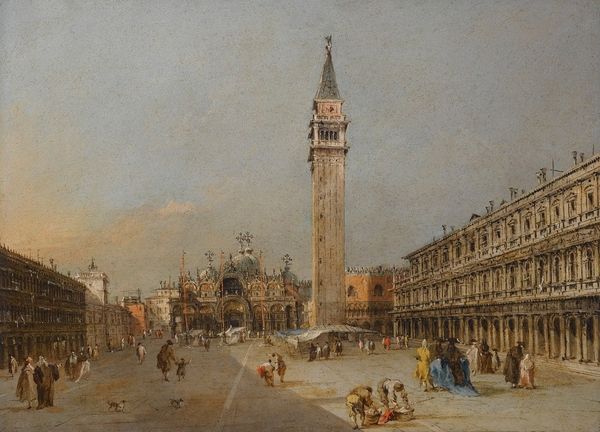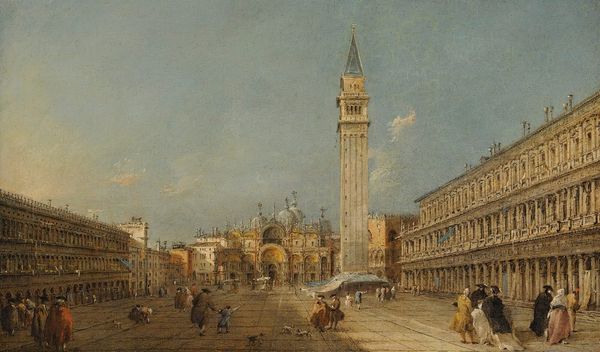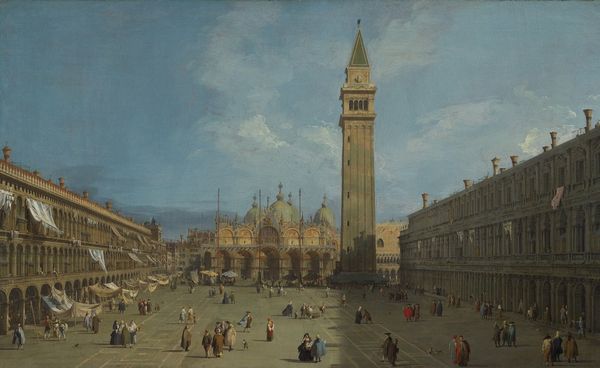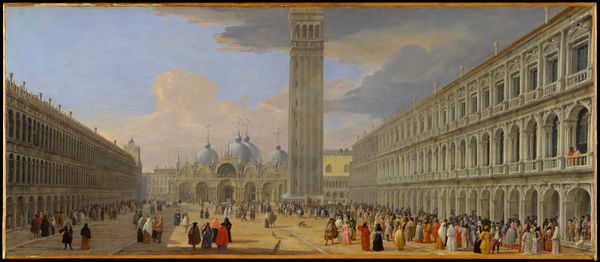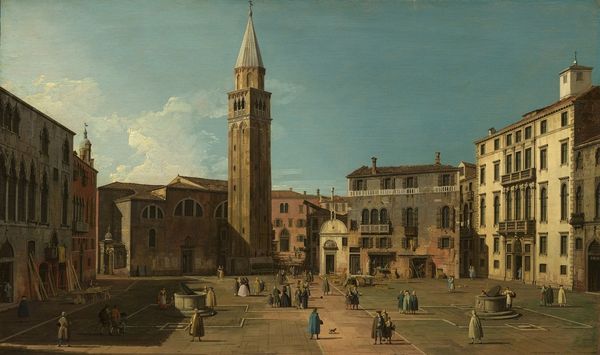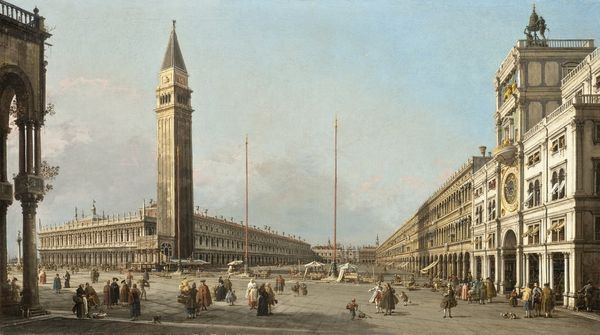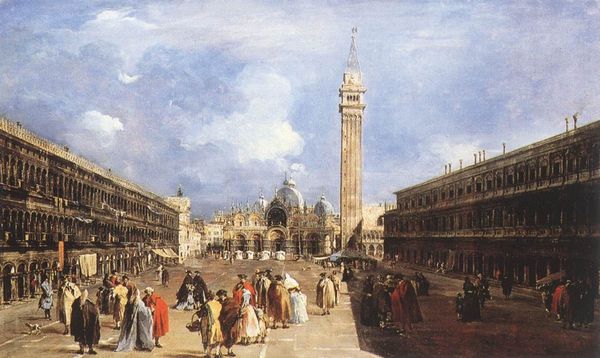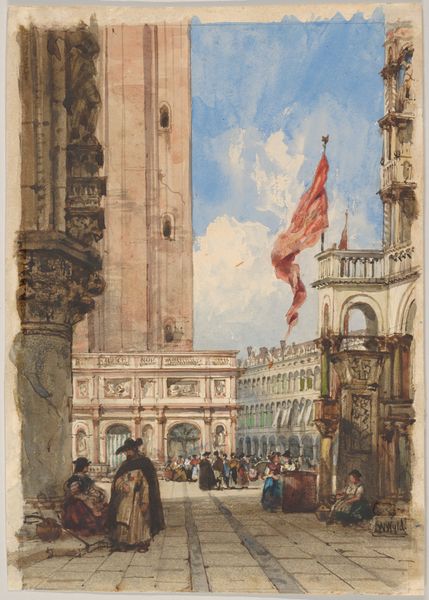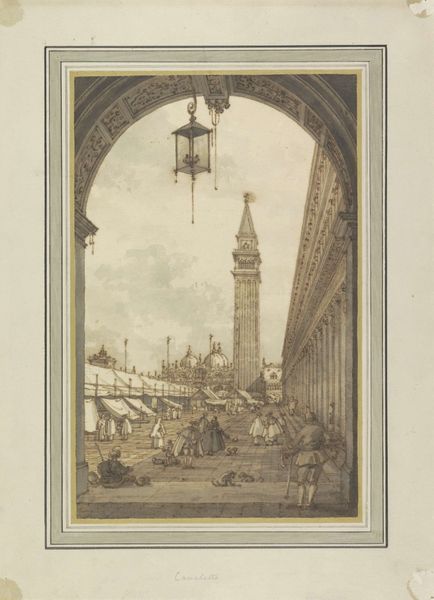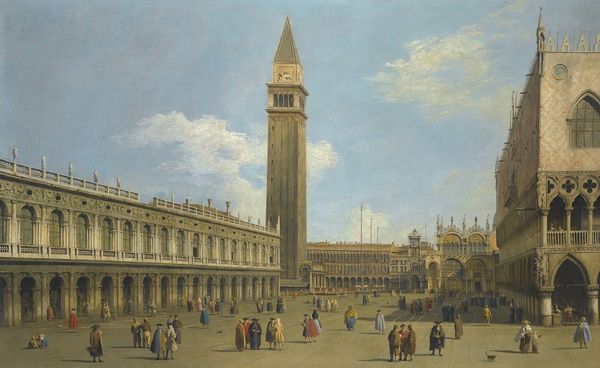
Dimensions: 53.8 x 41.3 cm
Copyright: Public Domain
Editor: Here we have Giacomo Guardi's oil on canvas, "Saint Mark’s Square in Venice," created sometime between 1780 and 1810. I'm struck by the framing—it's like we're peeking out from a shadowed archway. What aspects of its composition draw your attention? Curator: The framing is, indeed, quite deliberate. Notice how the arch directs the eye towards the Campanile, creating a strong vertical axis. This axis then plays against the horizontal lines of the Procuratie Vecchie and the tented market, establishing a visual rhythm. How does this interplay of lines and forms affect your perception of space? Editor: I see what you mean. The verticals make the space feel grand, almost infinite, while the horizontals ground it. It's like a push and pull. Curator: Precisely. And consider the handling of light. The bright square is juxtaposed with the darkness of the arch, enhancing the contrast and directing our gaze. How does Guardi use light to articulate depth? Editor: The artist uses brighter colours and stronger definition in the main subject matter of the buildings, while he uses darker tones, blurry lines, and the framing of the arch to add contrast and highlight the buildings of Venice in the distance. What do you make of his application of baroque style within this landscape piece? Curator: A fair observation. His baroque sensibilities surface with how it dramatizes how Venetian buildings and peoples appear in his perspective. Considering how he framed the city of Venice using architecture and colour, it might suggest a way to see a perspective (perhaps social?) of 18th-century Venice. This might explain the appeal in Venice art at that time. What would you say about that analysis? Editor: Hmm, the light as a lens... Interesting. It seems the architecture *is* a point of interest to Venice paintings after all. Thank you. Curator: A fruitful observation indeed. It seems our analysis has not been in vain!
Comments
No comments
Be the first to comment and join the conversation on the ultimate creative platform.
